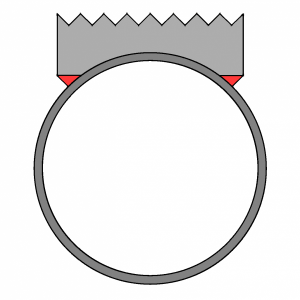I get why you didn’t want to post the final use or intention for the parts, but I think it could be a help. With the final goal in mind, someone might be able to think more outside the box. They might have a better idea of tolerances required, or might have suggestions on changes that could make he parts easier (cheaper) to make and accomplish the same goal. For instance, if the curved piece is just to fit the radius of the pipe and be welded on, farm fit might be good enough. The curve could be cut in steps with a small end mill and be good enough.
If I were working in wood, that's pretty much exactly how I would do it, with the added finishing of a drum sander or the end of a belt sander.
I have some router bits that are close in radius, and they would do the job in wood.
In fact, I have already made these out of reclaimed pallet wood a couple of times. I know how the woodworking processes go, but I don't know anything about any of the metal machining ones.


